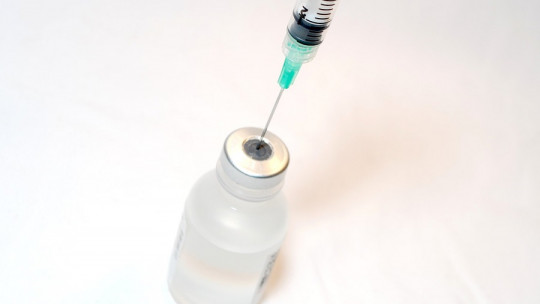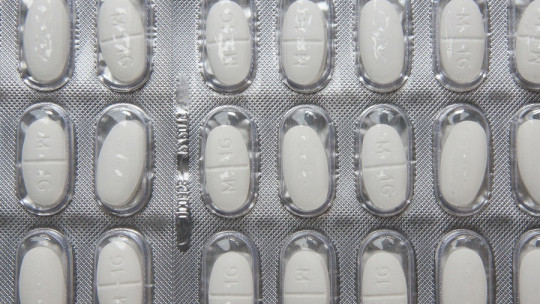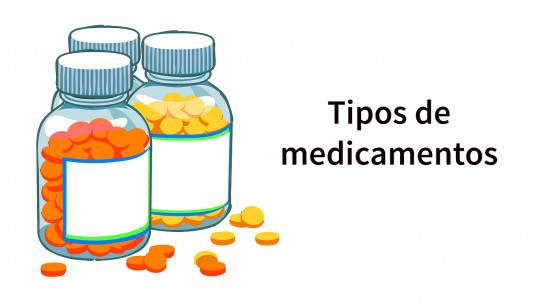Naloxone is an opioid antagonist which is used to treat opiate poisoning or overdose (especially heroin). It also has among its indications to treat respiratory depressions or depressions of the CNS (Central Nervous System).
In this article we will learn about its characteristics, routes of administration, mechanism of action, adverse reactions, indications and precautions that should be taken regarding its use.
Naloxone: characteristics
Naloxone is an opioid antagonist drug, which is indicated to treat opiate poisoning and respiratory depression The fact that it is an opiate antagonist means that it “slows down” or blocks the effect of this substance. It is usually administered as an injectable solution.
The main contraindication of naloxone is hypersensitivity to it or hypersensitivity to its main compound, naloxone hydrochloride (or to any of its excipients).
Opioids
To understand how naloxone works, it is also useful to know what an opioid is.
Opioids are substances that reduce pain, that is, analgesic substances. These are natural substances (coming from seeds called “poppies”), but they can also be synthesized; besides, They can be used as medicines or as drugs (according to its use, characteristics,…). Opiates are morphine, heroin, hydrocodone, codeine, etc. These molecules work by binding to opioid receptors (a type of protein), minimizing the person’s perception of pain
Routes of administration
Continuing with naloxone, this It is usually administered intravenously (IV) through an injectable solution It can also be given intramuscularly (IM), or it can be given through an intravenous infusion. This last route of administration, less known, consists of introducing an intravenous solution into the bloodstream continuously; It is performed through a catheter inserted into a peripheral or central vein.
However, it is important to note that in acute cases (especially due to overdose of opiates such as heroin), the most recommended route of administration will be the intravenous (IV) route, since the effect occurs more quickly; Specifically, the effect becomes evident after approximately 2 minutes. The duration of the effects will always depend on the dose ; However, it is generally between 1 and 4 hours.
If a second or third dose is needed, this will always depend on the opiate that is to be antagonized (or the type of respiratory or CNS depression that the patient presents); specifically, of the type, its quantity and the route of administration used, among others.
Mechanism of action
Naloxone actually It is composed of naloxone hydrochloride, which is a semi-synthetic derivative of morphine (a natural opiate). Its mechanism of action involves specifically antagonizing opioids; Specifically, it acts by competing at opiate receptors.
This drug has a very high affinity with this type of receptors (that is, it fits very well with them). What it does thanks to this is displace the antagonists and opiate agonists.
Composition and dosage
On a chemical level, is derived from oxymorphone, a very potent semi-synthetic opioid analgesic The drug is composed of naloxone hydrochloride. Specifically, each 1 ml naloxone ampoule contains 0.4 mg of naloxone hydrochloride.
The recommended doses in adults are generally 0.4 to 20 mg intravenously. In the event that no improvement in respiratory depression is obtained after administration by this route, it can be re-administered at intervals of 2 to 3 minutes (always by a medical professional). Of course, Its use must be indicated and prescribed by doctors
Indications
Naloxone It is frequently known for its use during acute opiate poisoning or overdose The main natural opiate is morphine. Another opiate drug is heroin, a drug synthesized from morphine.
Other indications for naloxone are: to treat respiratory depression or CNS (Central Nervous System) depression. The respiratory depression we mentioned is usually caused by the consumption of opiates, whether natural or synthetic. It is also indicated for babies who have just been born, with mothers who have been taking opiates.
Another interesting fact is that when naloxone is administered in cases of opiate dependence, what happens is that symptoms of physical dependence increase
Pharmacokinetic properties
Pharmacokinetics has to do with the absorption time of drugs, the duration of their effect, etc. That is, it encompasses the processes that the drug goes through once it is administered into the body. Naloxone (naloxone hydrochloride) It is rapidly absorbed by the gastrointestinal tract
But why is naloxone not usually administered orally? It is also effective, but for it to produce the same effect as the other routes, much higher doses would be necessary to allow antagonism of the opiates (in case of overdose). That is why it is administered intravenously and intramuscularly.
Precautions
Special caution should be taken with patients who have a physical dependence on narcotics (narcotics are analgesic and/or anesthetic drugs), or who have been intoxicated by this type of substance; This is because the use of naloxone can induce acute withdrawal syndrome On the other hand, naloxone is not effective when respiratory depression is due to factors other than opioids.
Naloxone should also be used with caution in elderly patients. especially in those with any previous cardiovascular disease This is because there are known cases where naloxone has caused serious adverse cardiovascular effects in the elderly.
Additionally, it is not advisable to take naloxone at high doses during surgery after taking opioids. Special care or caution should be taken in cases of patients with cardiovascular diseases, or patients taking cardiotoxic drugs that can cause heart disorders.
Pregnancy and lactation
If you are pregnant, the relationship between risks and benefits of taking naloxone must be assessed consulting your family doctor or psychiatrist. There is not much data regarding taking naloxone during pregnancy, but it is known that it can cause withdrawal symptoms in the baby.
Regarding breastfeeding, it is not known whether or not naloxone can pass into breast milk. It has also not been established whether breast-fed children have any effects from naloxone.
Side effects
Like any drug, naloxone can also cause a series of adverse reactions in the patient, such as: nausea, vomiting, tachycardia, hypo/hypertension, headache, postoperative pain and fainting among others.
Other adverse reactions that naloxone can cause, and that have been reported especially in postoperative periods, are states of hypotension, hypertension, pulmonary edema, fibrillation and ventricular tachycardia. Furthermore, these adverse reactions have been seen especially in people with cardiovascular diseases or who have been taking similar drugs.









